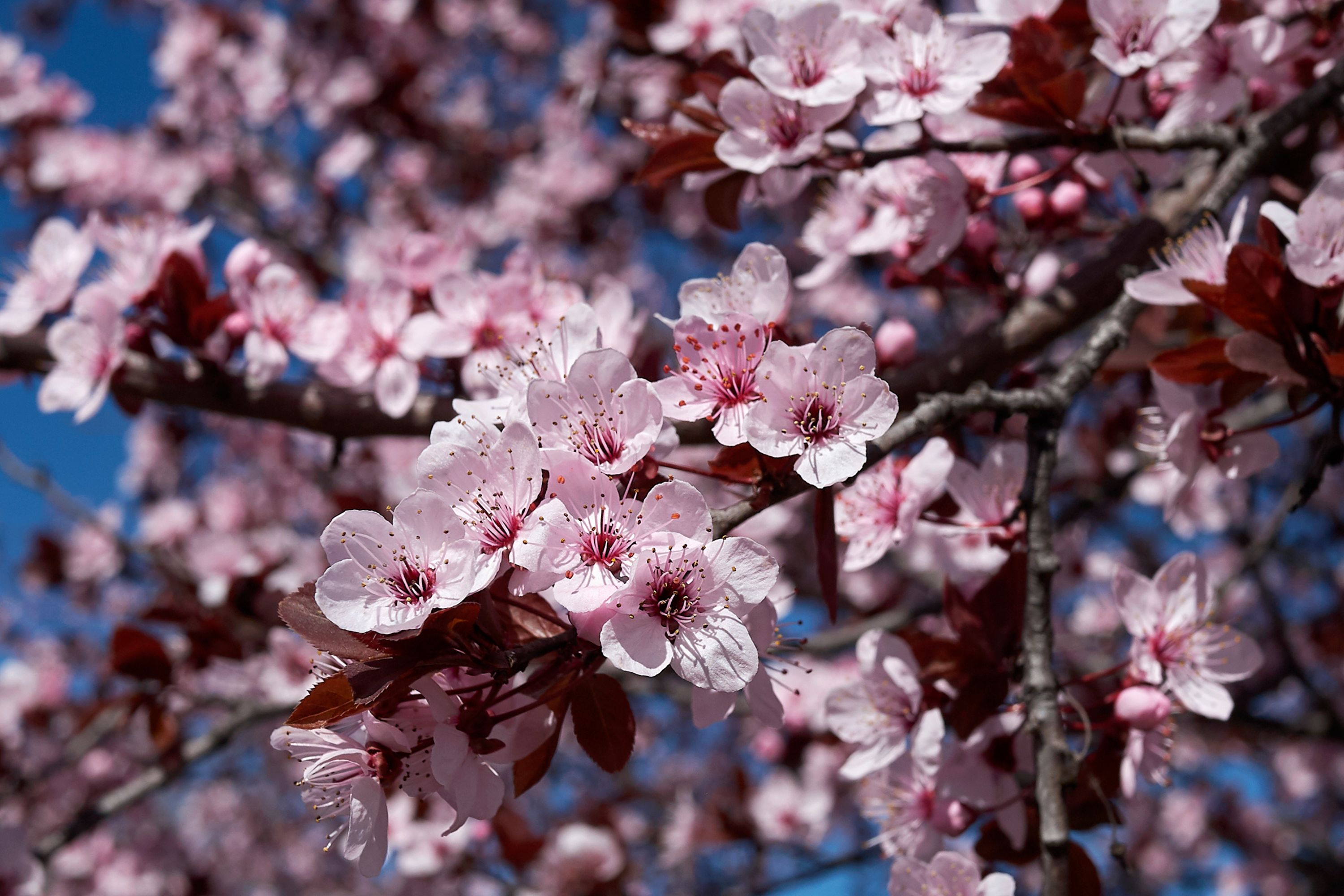Cherry plum
(Prunus cerasifera)

Description
Prunus cerasifera, commonly known as the Cherry Plum, is a small deciduous tree or large shrub that belongs to the family Rosaceae. It is native to Asia and Europe and is widely cultivated in many parts of the world, including North America, Australia, and New Zealand. This plant is grown for its ornamental value and edible fruit. Description: The Cherry Plum can grow up to 8 meters in height, but it is usually a small tree or large shrub that reaches a height of 3-4 meters. The bark is smooth and gray-brown, while the twigs are green and have a shiny appearance. The leaves are alternate, oval, and have a serrated edge. They are dark green in color and have a glossy surface. The flowers are white or pale pink and appear in early spring before the leaves. They are solitary or arranged in small clusters along the branches. The fruit is a small drupe that is usually red or yellow and has a thin skin. It contains a single seed and is edible, though the taste can vary from sweet to sour. Cultivation: The Cherry Plum is easy to grow and is adaptable to a wide range of soil types. It prefers a well-drained soil that is rich in organic matter. It can be grown in full sun or partial shade and is tolerant of drought and frost. The plant is propagated by seed or by grafting onto a rootstock. It is a fast-growing plant and can reach maturity within 4-5 years. Uses: The Cherry Plum is grown for its ornamental value and is widely used as a landscape plant. It is particularly attractive in early spring when it is covered with masses of white or pink flowers. The fruit is also edible and is used for making jams, jellies, and other preserves. In some parts of the world, the fruit is also used to make wine. Benefits: The Cherry Plum has several benefits. Firstly, it is a great source of nectar for bees and other pollinators, making it an important plant in supporting local ecosystems. Secondly, the fruit is a good source of vitamins and minerals, particularly vitamin C. Lastly, the plant is used in traditional medicine for treating various ailments, including coughs, sore throats, and digestive problems. Potential issues: The Cherry Plum is generally a hardy and disease-resistant plant, but it can be susceptible to several problems. These include bacterial canker, leaf curl, and brown rot. Bacterial canker causes small cankers on the branches and can lead to dieback. Leaf curl causes the leaves to curl and distort, and can lead to reduced fruit production. Brown rot affects the fruit and causes it to rot and fall prematurely. Conclusion: In summary, Prunus cerasifera is a small deciduous tree or large shrub that is widely grown for its ornamental value and edible fruit. It is easy to grow, adaptable to a wide range of soil types, and is a great source of nectar for pollinators. The plant is also used in traditional medicine for treating various ailments. While it can be susceptible to several problems, it is generally a hardy and disease-resistant plant that can be a great addition to any garden or landscape.
Taxonomic tree:







